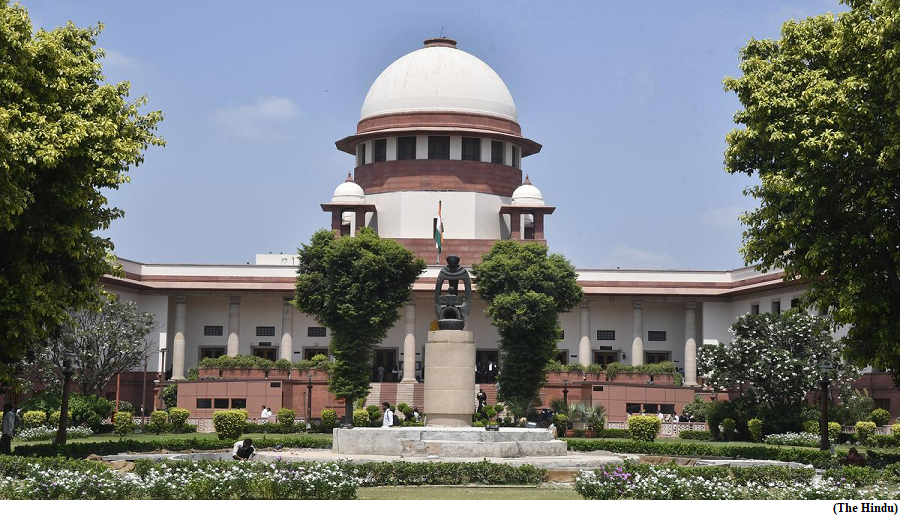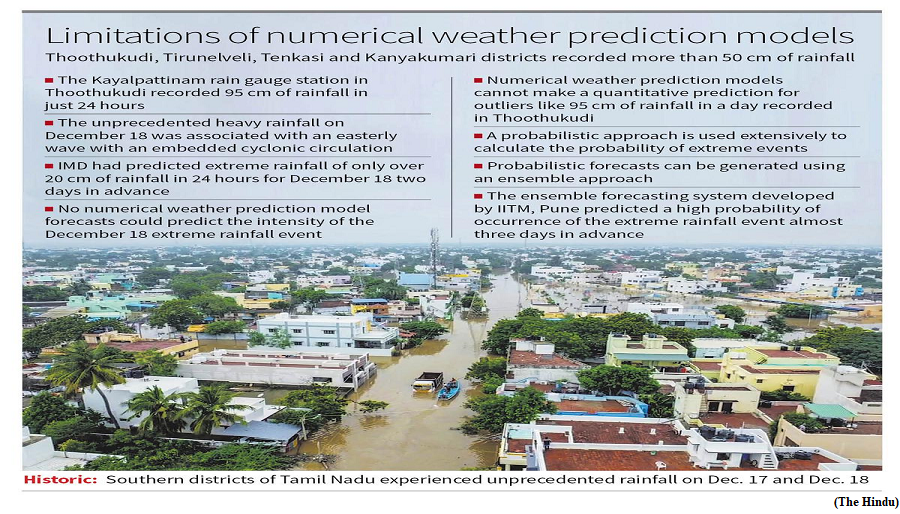Tribunals cannot direct govt. to frame policy, SC judgment (GS Paper 2, Polity and Constitution)

Why in news?
- The Supreme Court has clarified that tribunals functioning under the strict parameters of their governing legislation cannot direct the government to make policy.
- The Bench held that a Tribunal is also a quasi-judicial body, functioning within the parameters set out in the governing legislation. It cannot direct those responsible for making policy, to make a policy in a particular manner.
Key Highlights:
- The Bench was dealing with a question of whether the Armed Forces Tribunal (AFT) could have directed the government to make a policy to fill up the post of the Judge Advocate General (Air).
- The AFT was vested with the powers of a civil court. The Tribunal did not have the powers of the Supreme Court or the High Courts.
- Even the High Courts cannot, in the exercise of the powers under Article 226 of the Constitution, direct the government or a department to formulate a particular policy.
- The judgment said the creation or sanction of a scheme or policy regarding the service of defence personnel or their regularisation was the “sole prerogative of the government”.
About Armed Forces Tribunal (AFT):
- Armed Forces Tribunal (AFT) has been set up under Armed Forces Tribunal Act, 2007 to provide for the adjudication or trial of disputes and complaints with respect to commission, appointments, enrolment and conditions of service in respect of persons subject to the Army Act, 1950, the Navy Act, 1957 and the Air Force Act, 1950 and also to provide for appeals arising out of orders, findings or sentences of courts-martial held under the said Acts and for matters connected therewith or incidental thereto.
- It was inaugurated by the President of India on August 08, 2009.
- It was established to ensure speedy and inexpensive justice to Ex-Servicemen, their families and war-widows, besides the serving personnel of the Armed Forces.
- Armed Forces Tribunal has its Principal Bench at New Delhi and eight Regional Benches at Jaipur, Chandigarh, Lucknow, Guwahati, Kolkata, Chennai, Kochi and Mumbai.
Predicting extreme rainfall using probabilistic forecasts
(GS Paper 1, Geography)
Why in news?
- While Tamil Nadu was recovering from the devastation caused by the tropical cyclone Michaung, another catastrophic event occurred.

Details:
- The southern districts of Tamil Nadu; Thoothukudi, Tirunelveli, Tenkasi and Kanyakumariexperienced unprecedented and extremely heavy rainfall. At least nine rain gauge stations in these districts reported heavy rainfall of more than 50 cm.
- The Kayalpattinam station in Thoothukudi recorded 95 cm of rainfall in just 24 hours. In terms of probability, this event could be termed as a once in a hundred-year event.
- These heavy rains led to massive and widespread flooding, caused extensive damage, and claimed a few lives.
Factors:
- The 2023 northeast monsoon was in an active phase during this episode, characterised by the presence of an east-west trough (or ITCZ).
- The unprecedented heavy rainfall was associated with an easterly wave with an embedded cyclonic circulation that moved from the southwestern Bay of Bengal across southern Tamil Nadu and Kerala into the southeastern Arabian Sea.
- There was a large-scale, intense convergence of winds with the influx of abundant moisture into the region. The north-south running hills along the Tamil Nadu-Kerala border are also likely to have contributed to the dynamics of the heavy rains.
IMD forecast:
- The India Meteorological Department (IMD) had predicted extreme rainfall (more than 20 cm of rainfall in 24 hours) for December 18 about 48 hours in advance and issued a red level warning.
- But rainfall of more than 50 cm was not expected at all. Compared to a tropical cyclone, this weather system was weaker. A review of the available numerical weather prediction (NWP) model forecasts showed that no model could predict the intensity of this heavy rainfall event.
- The models only predicted heavy rainfall in the order of 20-25 cm in 24 hours. However, the numerical weather prediction models cannot make a quantitative prediction for this kind of outlier—95 cm of rainfall.
Probabilistic forecasts:
- For the prediction of extremes, a probabilistic approach is generally used extensively to calculate the probability of such extreme events occurring in each region. These probabilistic forecasts can be generated using an ensemble approach, where we generate a larger number of forecasts (30-40 forecasts) with perturbed initial conditions.
- The Indian Institute of Tropical Meteorology (IITM) in Pune has developed such a prediction system for making probabilistic forecasts.
- This ensemble forecasting system was able to suggest the high probability of occurrence of extreme rainfall events in southern Tamil Nadu almost three days in advance. But the prediction did not indicate 95 cm rainfall in Thoothukudi.
- Probabilistic forecasts provide more lead time, which can be used for better preparation. End users should be trained to use probabilistic methods for proper mitigation of such extreme events.
- The fact that this event is a hundred-year event does not mean that it can happen only after 100 years. It could happen next year too.
- The IPCC models indicate that extreme precipitation events may occur more frequently as global warming progresses. Heavy rainfall of this magnitude due to a relatively weak weather system should worry us.
Way Forward:
- To meet the challenge of climate change, a comprehensive strategy that includes robust early warning systems, sustainable urban planning, ecosystem conservation, global climate action and community engagement is essential to effectively mitigate the impacts of increasing extreme precipitation events.
- The robust early warning system is very vital, but it is only one component of this comprehensive strategy. More research is required for a better understanding of the physical processes of these extreme events. Public awareness and education also play a crucial role in building resilience.
- Communities should be educated about the risks associated with extreme precipitation events and receive information on how to prepare and respond effectively. Taking proactive measures today will contribute to a more resilient and sustainable future for generations to come.



